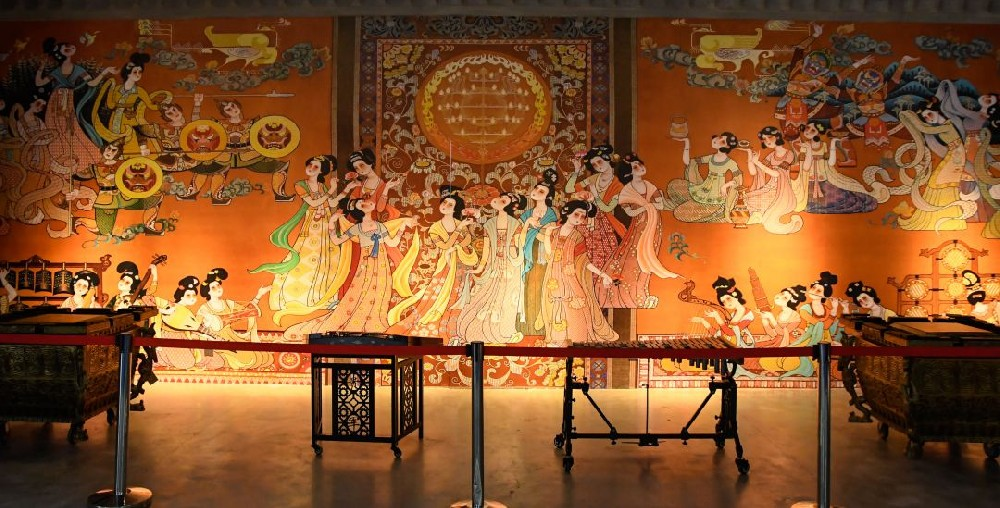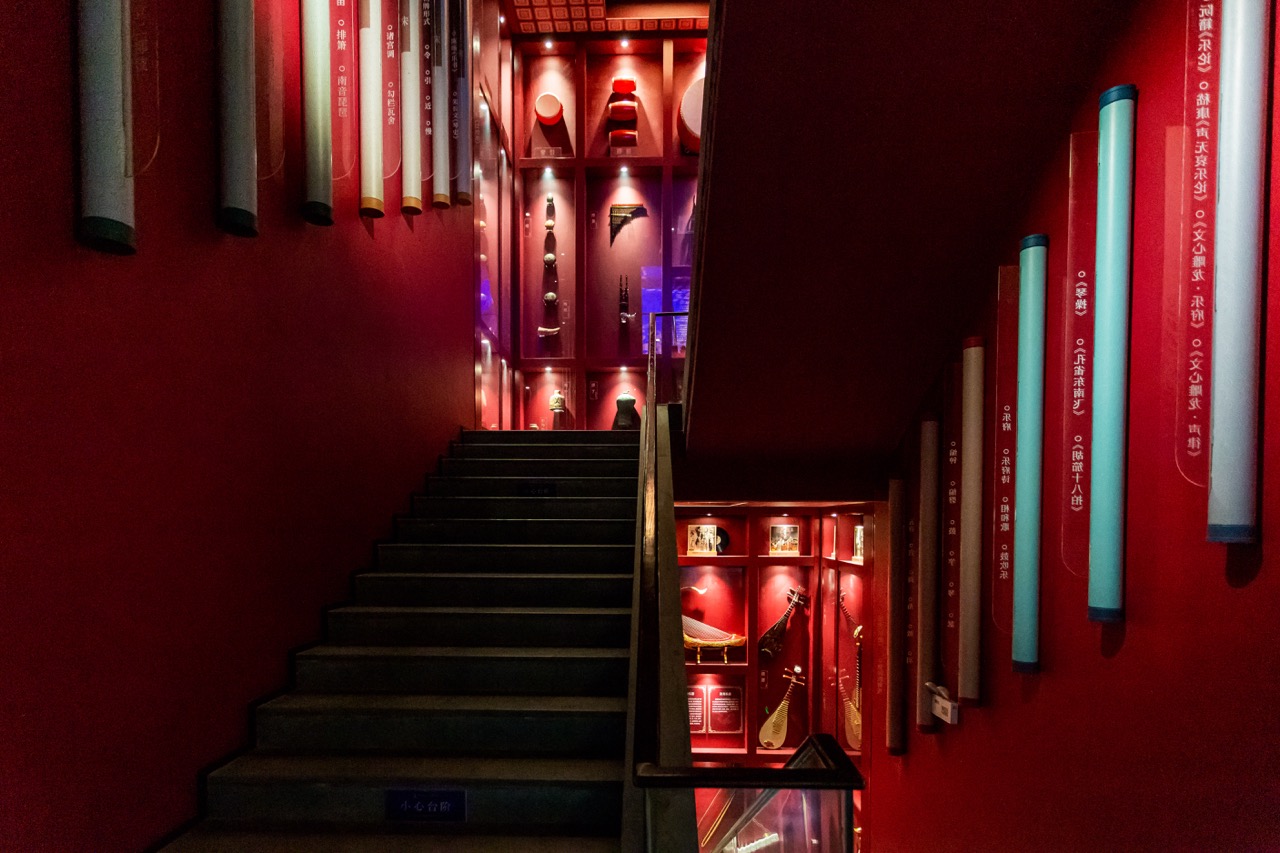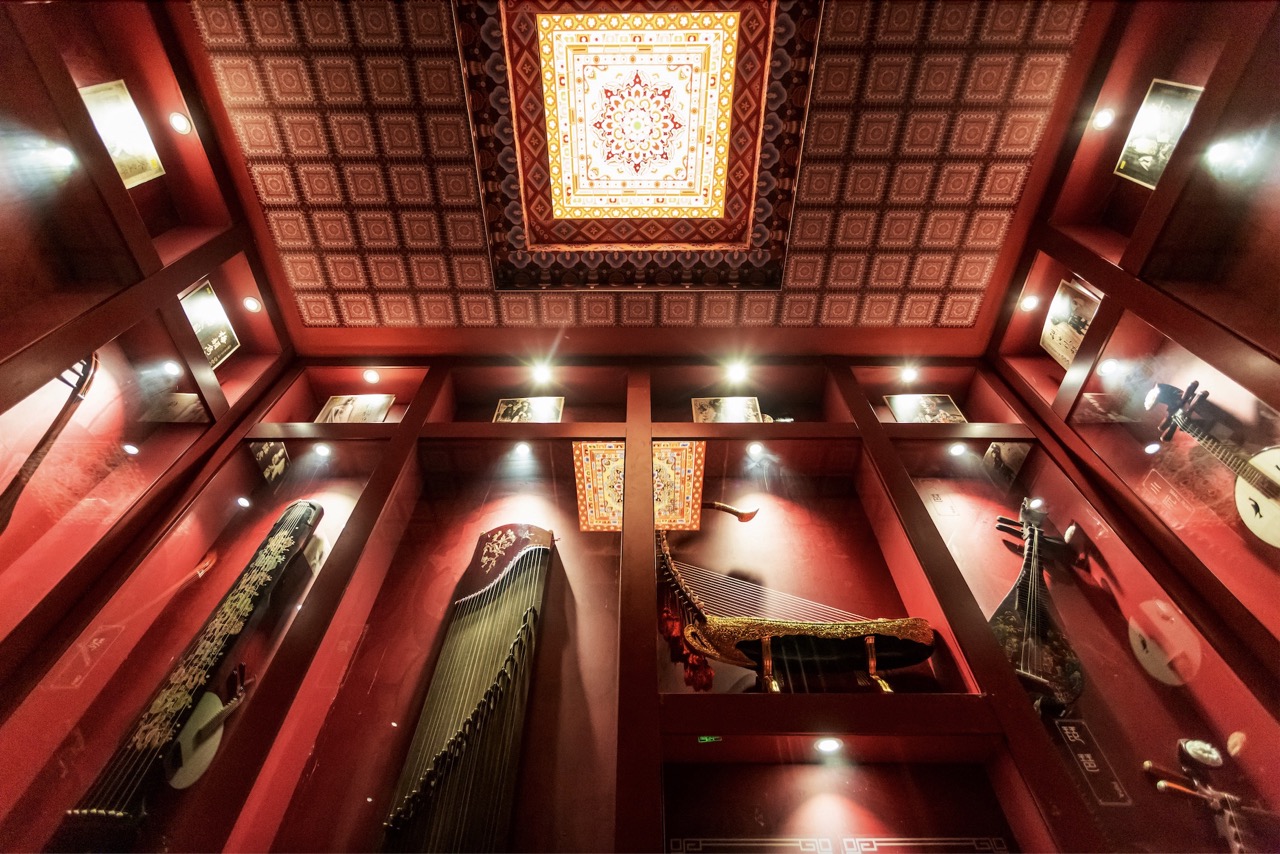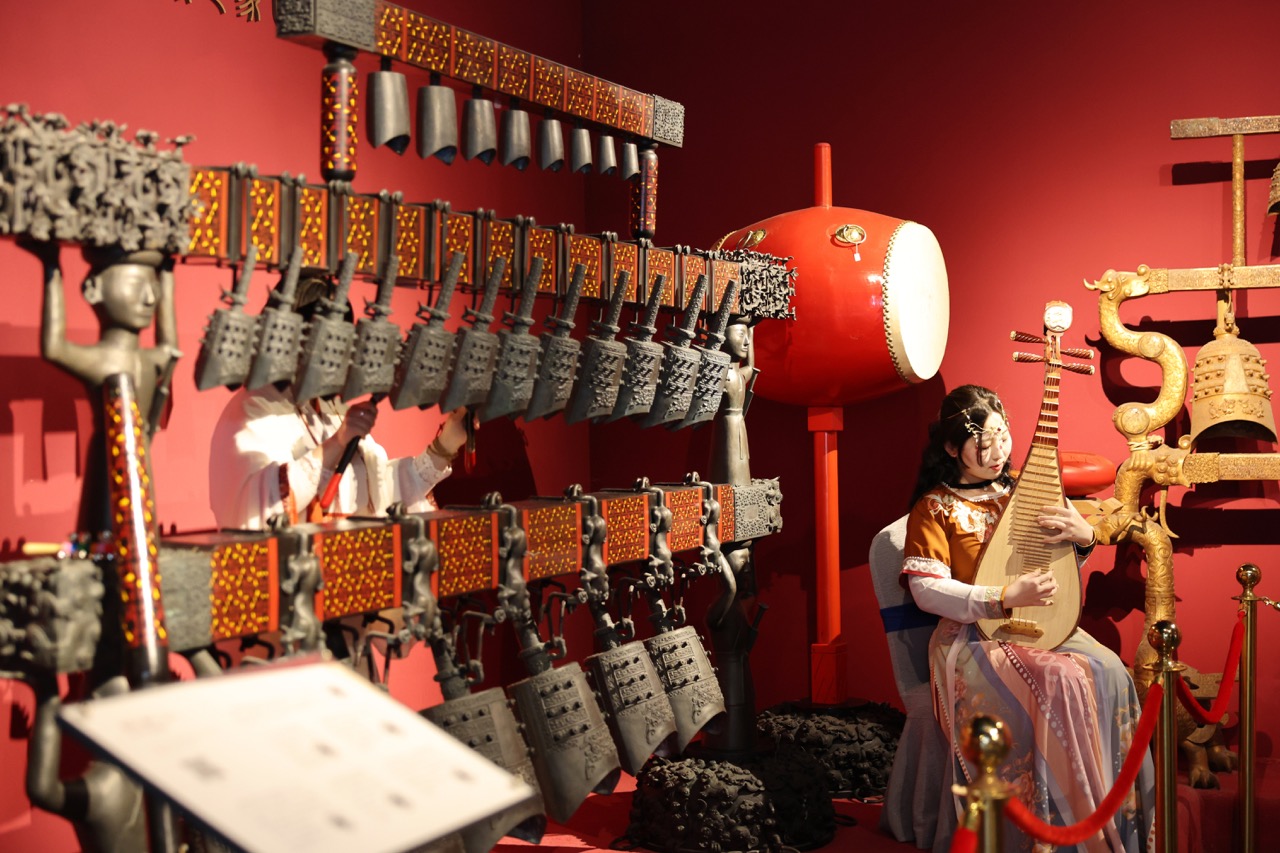The Chinese Music Culture Exhibition Area presents a retrospective of the five-thousand-year history of Chinese musical culture. Commencing in the Neolithic era—predating written records—with rudimentary instruments crafted from animal bones and fired pottery, the narrative progresses through the Xia and Shang slave societies. Here, songs, dances, and music centred on ritual offerings and celebrations of humanity's triumph over nature are showcased, alongside instruments like the wooden-cavity drum with animal skin and bronze chimes, created under the influence of the Bronze Age using animal hides and bronze as primary materials. Progressing to the ritual music systems of the Western and Eastern Zhou dynasties, poetry and music culture flourished. The culture of the qin (now known as the guqin) emerged, alongside the invention of the pentatonic scale (gong, shang, jiao, zhi, yu) and the eight-instrument classification (metal, stone, silk, bamboo, gourd, earth, leather, wood), culminating in the formation of the twelve-tone system. During the Qin and Han dynasties, the ‘Xianghege’ (Harmonious Songs) developed the ‘Method of Three-Part Reduction and Increase’ from the twelve-tone system. By the Northern and Southern Dynasties, a new tuning system emerged that closely approximated the twelve-tone equal temperament. This evolved further during the Tang and Song (and later Yuan, Ming, and Qing) dynasties through the fusion of ethnic musical cultures, culminating in the world's first discovery of twelve-tone equal temperament.
In the modern era, Chinese music evolved from revolutionary songs into a grand fusion of global musical cultures. This trajectory vividly demonstrates the Chinese civilisation and national spirit embodied within the musical chapters of the nation's historical tapestry.

、
 、
、 、
、
